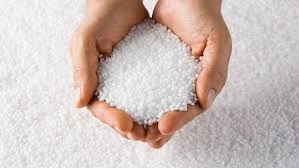Chemical Used for Purification of Water
Water is essential for life, yet ensuring its purity is often a complex process that requires various treatments and technologies. Water sources can be contaminated with a mix of physical, chemical, and biological pollutants. The purification of water is critical not just for drinking, but also for agriculture, industrial applications, and maintaining ecological balance. This article explores several chemicals widely used in the purification of water and their functions.
1. Chlorine
One of the most commonly used chemicals for water treatment is chlorine. Its effectiveness as a disinfectant stems from its ability to kill harmful bacteria and viruses that can cause diseases. Chlorine is typically added to water in the form of chlorine gas or sodium hypochlorite (liquid chlorine). The process of chlorination involves adding chlorine to water to produce chloramines, which ensure a continuous disinfection residual. However, while chlorine is effective in killing pathogens, it can react with organic materials in water to form potentially harmful by-products known as trihalomethanes (THMs). Despite this concern, the benefits of chlorination in preventing waterborne diseases often outweigh the risks.
2. Ozone
Ozone (O₃) is another powerful oxidizing agent utilized in the disinfection of water. It is more effective than chlorine in eliminating bacteria, viruses, and other pathogens due to its higher oxidation potential. Ozone treatment is primarily employed in drinking water purification and wastewater treatment facilities. The advantage of using ozone is that it decomposes back into oxygen, leaving no chemical residues. However, the generation of ozone requires specialized equipment, and its application is typically more expensive than conventional chlorination.
Activated carbon is widely used in water purification systems as an adsorbent to remove organic compounds, chlorine, sediment, and heavy metals. The porous nature of activated carbon increases its surface area, allowing it to trap contaminants effectively. This form of carbon is essential in processes such as filtration and purification in both municipal water supplies and home water systems. Although activated carbon does not kill pathogens, it significantly enhances the aesthetic quality of water by removing odors, colors, and tastes associated with chemical contaminants.
chemical used for purification of water

4. Coagulants
Coagulation is a crucial step in water treatment, where coagulants are added to help remove suspended particles and impurities from water. Common coagulants include aluminum sulfate (alum) and ferric chloride. When these chemicals are added to water, they neutralize the charges on particles, causing them to clump together or coagulate. This process allows for easier removal of these particles through sedimentation and filtration. Coagulation is vital in treating turbid water from sources like rivers and lakes.
5. Lime and Soda Ash
In addition to acting as coagulants, lime (calcium hydroxide) and soda ash (sodium carbonate) are crucial in water softening processes. They are used to adjust the pH and remove hardness-causing minerals like calcium and magnesium. By precipitating these minerals out of solution, lime and soda ash help improve the overall quality of water, making it suitable for industrial and drinking purposes. These chemicals are also essential in treating wastewater to prevent the leaching of hardness into the environment.
6. Ultraviolet (UV) Light
Though not a chemical in the traditional sense, ultraviolet (UV) light is an increasingly popular method for water purification. UV radiation effectively kills or inactivates a wide range of pathogens without the use of chemical additives. The process involves exposing water to UV light, disrupting the DNA of bacteria, viruses, and protozoa, rendering them harmless. This method is highly effective and leaves no residual chemicals in the water.
Conclusion
The purification of water is a critical process that employs various chemicals to ensure safety and quality. Each chemical used has distinct advantages and limitations. While chlorine and ozone serve as strong disinfectants, activated carbon and coagulants assist with the physical removal of contaminants. The selection of appropriate chemicals is vital in meeting regulatory standards and protecting public health. As water quality continues to be a global concern, understanding and advancing water purification technologies remain essential for sustainable water management.

